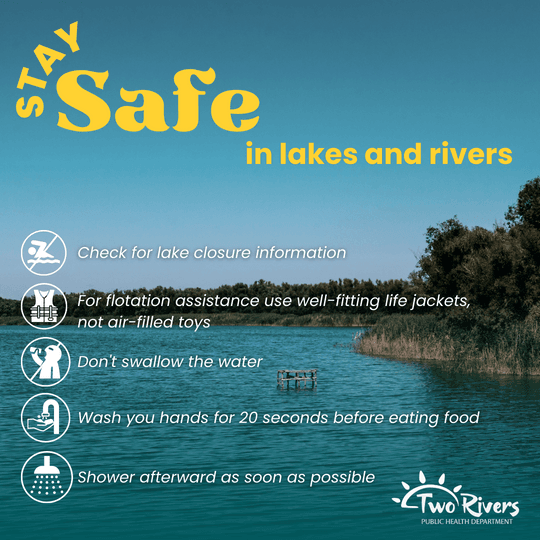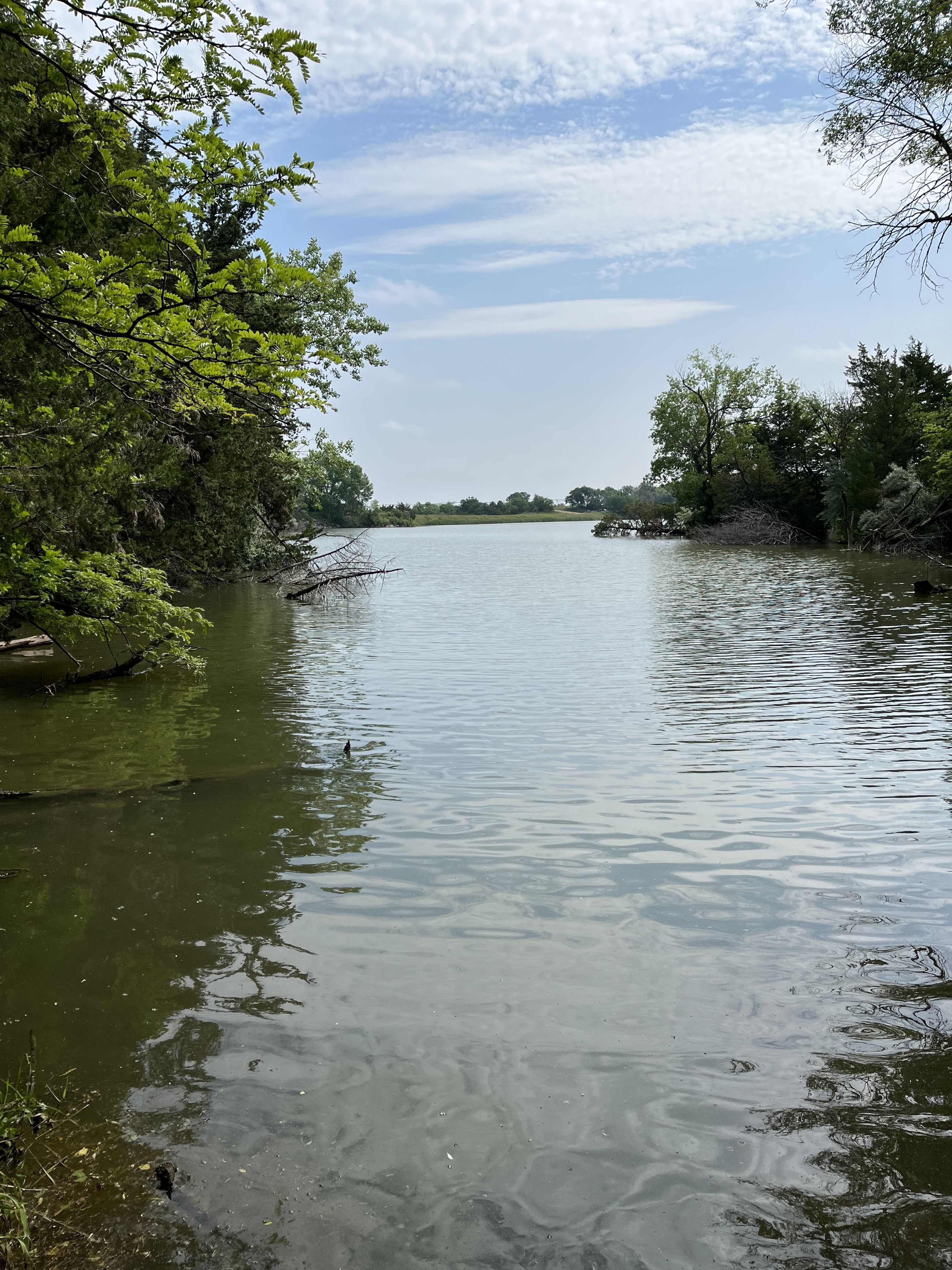
Water is essential for life and an integral part of one’s health. Two Rivers Public Health Department has compiled the following information to educate and empower residents about their water.
Nebraska Water Sources
Groundwater
Ground water is water trapped in soil but above bedrock. After raining, water can be absorbed into the soil and some is used by plants. The remaining water can seep through the soil and sits on top of a dense rock layer.
Surface water
Surface water is any water found above the ground. Nebraska’s surface water includes 18,000 miles of rivers and over 400 square miles of lakes.
Drinking Water
In Nebraska, 85% of residents’ drinking water comes from groundwater. Some Nebraska water systems use surface water sources and some groundwater wells pull water indirectly from lakes or streams. Such wells are called Groundwater Under the Direct Influence of Surface Water (GWUDI).
Community Water Systems
A community water system refers to the water supplied to areas of at least 15 residences or 25 people (municipality, mobile home park, etc.).
Private Water Systems
Private water systems refer to water supplied to no more than 25 people. Households living outside of a community water system typically have a private well. The source for private wells generally is groundwater.
Private Wells
- Want to learn more about private well ownership? Check out the Private Well Class!
- Want to learn more about groundwater drilling? You can take classes for college credit, here!
Water Quality and Regulation
The Safe Drinking Water Act (SDWA) was originally passed in 1974 in order to protect the nation’s public drinking water supply. The SDWA dictates that the Environmental Protection Agency (EPA) sets health standards for the drinking water. In Nebraska, the Department of Environment and Energy (NDEE) is the primary agency for enforcing drinking water standards.
Consumer Confidence Reports
All community water systems are required by the Consumer Confidence Report (CCR) Rule to produce annual water quality reports. The CCR is a summary about the systems source water, contaminant levels, compliance, and education information.
Public Notification Rule
In accordance with the SDWA, consumers should be notified if public drinking water may pose a risk to health. This requirement is the Public Notification (PN) rule. At minimum, PNs are directly delivered to consumers.
Regulations that protect public drinking water systems do not apply to private wells. Private well owners are responsible for testing their water for contaminants. During real estate transactions, some lending agencies require private well water to be tested for nitrate and bacteria
Water Testing
Why is testing needed? Natural conditions can change from year to year. Thus private wells should be tested at least once a year. Test your well immediately if you notice a change in water quality, have repaired part of your well, there has been flooding or a disturbance of the surrounding ground.
Potential Water Contaminants
Laboratories
At this time, TRPHD does not offer water testing. Please contact one of the following certified laboratories.
- Nebraska DHHS Public Health Environmental Lab, (402)-471-2122, Price List
- Central District Health Department, (308)-385-5175, Grand Island, NE 68801
- Ward Laboratories, (308) 234-2418, P.O. Box 788, Kearney, NE 68848
- Platte Valley Laboratories, (308) 468-5975, 1002 Hwy 30, Gibbon, NE
- ServiTech Laboratories, (402) 463-3522, Multiple locations including Kearney, Grand Island, Hastings, Columbus, and York.
- Regen Ag Labs, (308) 440-7560, 31740 Hwy 10, Pleasanton, NE
- Water Quality + Citizen Science, A program through UNL can provide you with phosphate and nitrate/nitrite test strips.
Treatment Options
Contaminated water may be treated through many different methods. Yet no method can remove all contaminates.
Wastewater
More information coming soon.
Wastewater Surveillance
Nebraska DHHS monitors the SARS-CoV-2 virus in wastewater to better understand COVID-19 across Nebraska. Weekly reports about COVID-19 wastewater concentrations were previously posted on the DHHS website. Data continues to be tracked but is no longer available online. Please contact NE DHHS to request data. For National COVID-19 Wastewater Surveillance data please visit the CDC’s website.
Recreational Water Sources (Pools, Lakes, and Beaches)
From May to September, the Nebraska Department of Environment and Energy (NDEE) monitors public recreational lakes across the state. Once a week lakes are tested for E. coli bacteria and harmful algal blooms (HABs) also known as toxic blue-green algae. To see weekly lake results or to sign-up for notifications, visit NDEE’s Beach Watch.
Trusted Resources
- Nebraska Department of Environment and Energy (NDEE) Water Division
- Nebraska Department of Natural Resources
- University of Nebraska Water Center
- United States Environmental Protection Agency (EPA)
- Centers for Disease Control and Prevention (CDC)
- Agency for Toxic Substances and Registry (ATSDR)
- National Groundwater Association (NGWA)
- WellOwner.org


